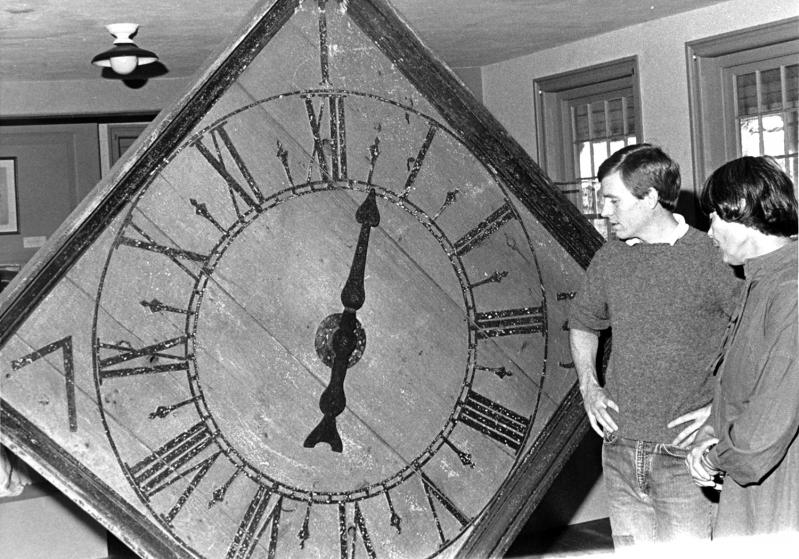As you watch the ball drop on New Year’s Eve, you may be reminded of the importance of accurate timekeeping. Without it, it would be impossible to coordinate that final countdown to midnight. Today, computerized smart devices that tell us the time down to a second are ubiquitous, but in years past, keeping time wasn’t so easy.
Most people could not afford pocket watches until the 19th century, when cheaper models became available to the broader public. In the absence of a watch, people would tell time by looking at a large public timepiece. The ringing of church bells kept time as early as the medieval period, and church bells continue to do so to this very day.
Some churches also had large clocks affixed to their facades, as was the case with the East Hampton Presbyterian Church. In this image from The Star’s photo archive, we can see the face of the clock, which had only one hand to indicate the hour.
Erected in 1717, the church was the village’s first house of worship. The clock and the steeple were probably added in 1753. Until 1861, the 1717 building stood roughly where Guild Hall is now.
In this image, N. Sherrill Foster (1921-2007), at right, shows a visitor to Clinton Academy the clock, which once hung from the church’s belfry. Foster was a well-known and highly dedicated East Hampton historian who made countless contributions to local history. She was especially interested in architecture, as evidenced by the walking tour of Main Street she gave in 1976. She was appointed director of the East Hampton Historical Society in 1979 and continued to champion history here until her death in 2007.
Julia Tyson is a librarian and archivist in the Long Island Collection at the East Hampton Library.




